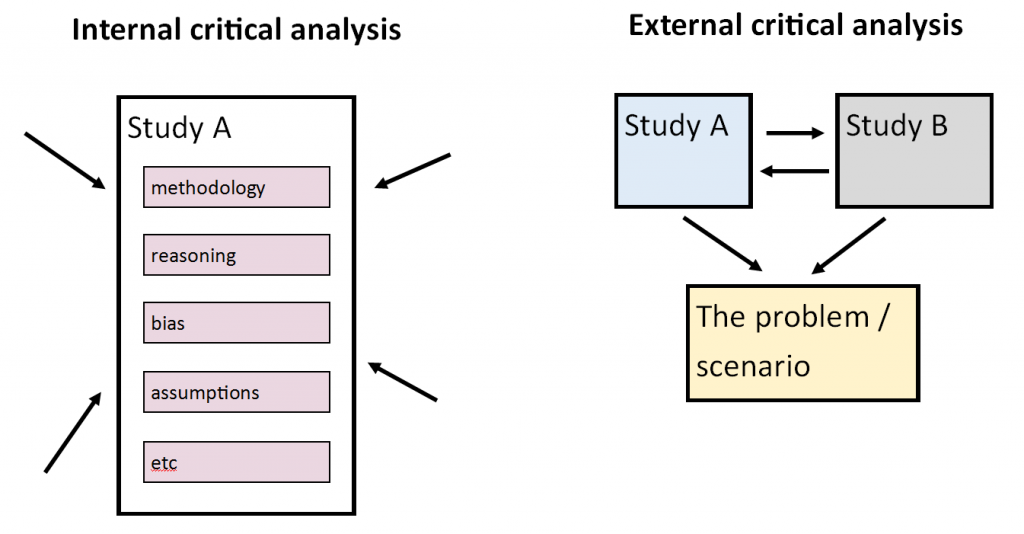As an academic skills tutor, I’m often faced with a student clutching a set of assessment criteria containing the phrase “critically analyse”, or a synonym of that instruction. In my experience, many students understand the broad concept of critical analysis (e.g. being sceptical, not taking information on face value, evaluating evidence, etc), but have difficulty in understanding the exact type of critical analysis required for a particular assignment.
I’d like to suggest that the phrase “critically analyse” is being used with (at least) two distinct meanings, which I will call internal critical analysis and external critical analysis. Some assignments require only one or the other of these types, while others call for a combination of the two.
Where internal critical analysis is required, the student typically is expected to examine the internal robustness of a study, article, theory, etc. This might include considering its methodology (e.g. is the sample size sufficient?), the validity of the reasoning from findings to conclusion, evidence of bias, any assumptions made, etc.
External critical analysis, on the other hand, places the emphasis on critically relating individual texts to a given problem or scenario and/or the wider body of literature in the subject area. For example, the learner might need to consider how useful a particular theory (or study/policy/guideline/model) is in addressing a particular problem (or scenario/issue). Is another theory better suited to the given problem? Is the theory (or study, policy, etc) consistent with others in the field? If not, why?

Sometimes it’s not immediately obvious to the learner which of these two forms of critical analysis is being asked for, or indeed whether both are required. As tutors, we can help students to unpack an assignment’s assessment criteria and identify what is needed: internal critical analysis, external critical analysis or both.



Leave a Reply